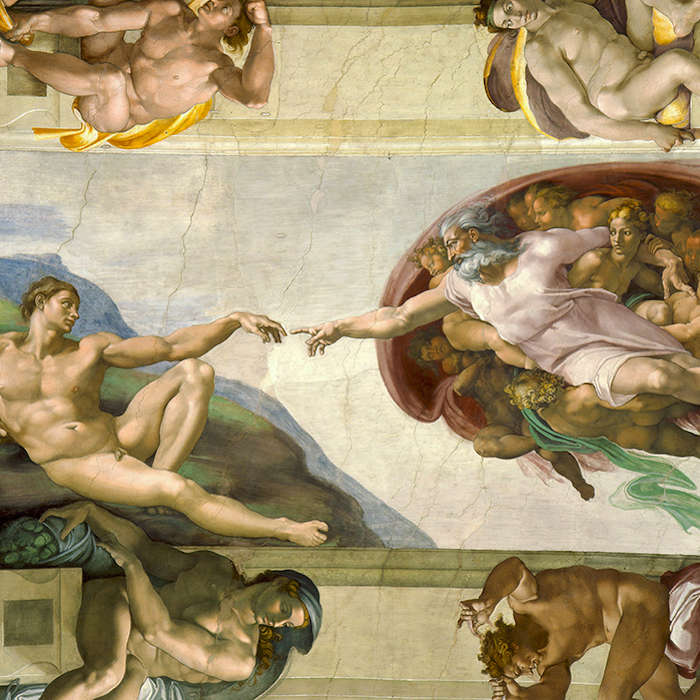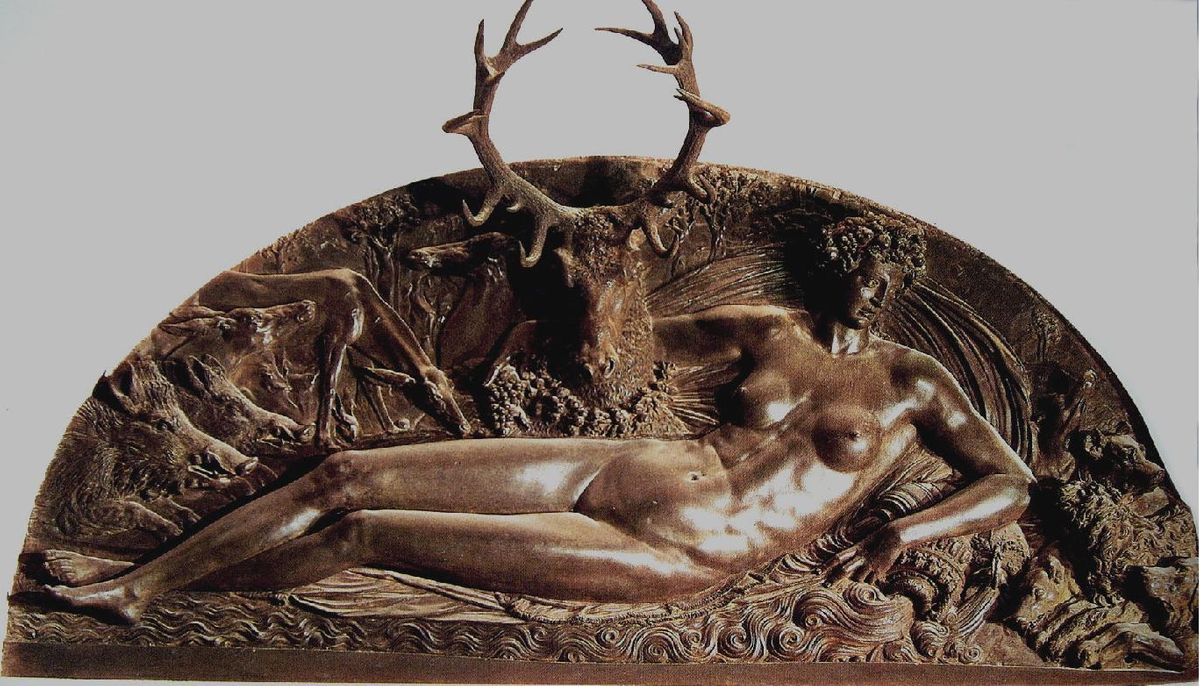The arrowslits were replaced by wide windows.



From the Renaissance onwards, being a painter like Leonardo da Vinci was a highly prestigious profession. The Middle Ages, when painters were considered simple manual workers, were over.
From now on, artists…
Better still, they became multi-skilled intellectuals. Mathematics, botany, anatomy and the rest were all within their reach as, as Renaissance people, they observed the world with curiosity.

From the Renaissance onwards, artists were intellectuals with a prestigious, recognized profession.
Artists did not just limit themselves to doing their own self-portraits. An increasing number of VIPs also wanted to see themselves portrayed in a painting. A great many portraits were done during the Renaissance.
This is one of the most famous, La Joconde (The Mona Lisa). Its creator, Leonardo da Vinci, combined a lady’s face with a misty landscape. No reliefs here: the artist used a technique which he invented himself for this, “sfumato” (“smoked”), using fine layers of graduated painting to give his work a vaporous look.
This lady’s mysterious smile still fascinates crowds today.

Mona Lisa by Leonardo da Vinci is one of the most famous portraits of the Renaissance period.
Numerous artists made their mark on the Renaissance! Three Italians stand out from the rest.

Leonardo da Vinci (1452-1519)
This all-rounder served several Italian princes before leaving for France. Highly perfectionist, he painted slowly and only left us a few paintings. Which is THE must-know work? The Last Supper.
Raphaël (1483-1520)
He had a reputation for the gracefulness of his characters, and especially worked for the Pope in Rome. Which is THE must-know work? The Sistine Madonna.


Michelangelo (1475-1564)
He was employed by the Pope, and shone in numerous arts, from sculpture to drawing. His tormented character penetrated all his works. Which is THE must-know work? The Slaves.

The Italian artists Leonardo da Vinci, Raphaël and Michelangelo made their mark on the Renaissance.
In 1508 Michelangelo started a very difficult task in the city of Rome. The Pope had entrusted him with the job of decorating the Sistine Chapel, which meant painting a fresco on a vaulted ceiling of 11,000 square feet!
Perched at a height of 60 feet from the ground, Michelangelo laboriously painted scenes from the Bible. Paint ran into his eyes, and his outstretched arms were extremely painful. As well as all this, he had to move quickly. The technique of fresco painting meant that he had to put his pigments onto a coating that dried extremely quickly.
It was worth it, however: the whole world was amazed by the final result.

In Rome, Michelangelo took up a considerable technical challenge, painting a fresco under the vaulted ceiling of the Sistine Chapel.
At the end of his life, Michelangelo’s work took a new turn.
In his later creations, the artist distorted his subjects’ bodies. This was a long way from the harmony of Renaissance flagship works.
He inspired a complete generation of young artists: the Mannerists.
They explored this “Mannerism” to push back the boundaries, even deforming their subjects, whose bodies became strangely stretched and contorted.

Bronzino, Christ the Gardener appears to St Madeleine, or Noli me tangere (Do not touch me),
1532, oil on wood, 114 x 76 inches, Louvre Museum, Paris. Photo: © RMN-Grand Palais (musée du Louvre) / Mathieu Rabeau

Parmigianino, The Virgin with the long neck,
1535 – 1540, oil on wood, Uffizi Gallery, Florence

Mannerists were inspired by Michelangelo, portraying elongated, contorted bodies.

During the 1530s, several Mannerists left for France, sent for by the king, François I, himself. The monarch, fascinated by the Italian palaces, wanted to rival them, through his amazing creations in his Fontainebleau residence.
What was the exhibition centrepiece? The “François I” Gallery, a sumptuous site decorated with frescos and mythological sculptures.
Very few people, however, got the opportunity to go there, since a royal invitation was needed!

During the Renaissance period the architectural style of French castles, which had now become places of leisure, was modernized.
That’s it, Renaissance art was now breaking through everywhere in France and its influence was not only visible in painting. Things were also changing in the field of architecture.
The mediaeval wars had now ended: castles no longer needed to be fortified and so became places of leisure.
If you want to see the finest French Renaissance castles, off to the Loire Valley!

During the Renaissance period the architectural style of French castles, which had now become places of leisure, was modernized.

Venice, Northern European countries and Germany also took a lead during the Renaissance.

"*" indicates required fields